Working conditions
Currently, the number of staff employed by the Royal Mint is around 900 but a not too dissimilar number would have been employed during the Second World War. The burdens placed on the Mint during the conflict led to a large increase in output and many more staff were needed. At its height in 1943 a total of 970 people were employed, almost double the number at the end of 1938. Unlike today, where staff work across a 34-acre site in Wales, the majority of the staff would have been working in the tight, cramped conditions of Tower Hill’s 4 acres.
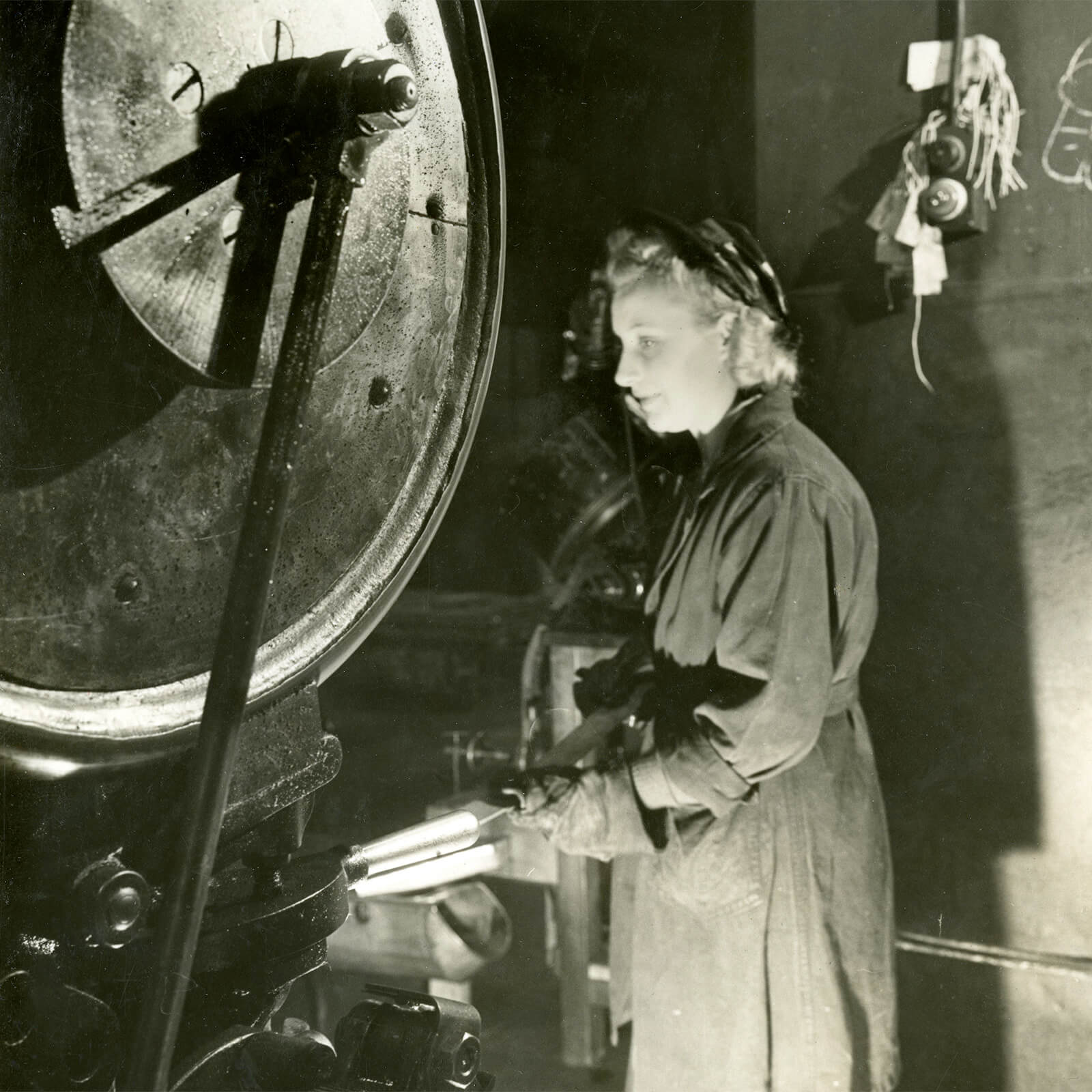
Woman working in cramped conditions in the Royal Mint factory
Throughout the Second World War, those working at the Royal Mint had to face dramatic changes to their working lives. By 1944 an average of 62 ½ hour week had been worked for nearly 5 ½ years with extremely limited annual leave during the period. It was this dedication that ensured the Mint continued to operate throughout the war.
When war began in 1939 a number of Mint staff were part of Reserve or Auxiliary Forces and directly after the start of the conflict 120 men were called up. Managing the sudden loss of 20% of the workforce placed a strain on those remaining at the Mint resulting in long 13 hour shifts for some. At the end of the war, a total of 137 pre-war staff had served with the forces. Thankfully, casualties had been comparatively light with 5 killed and 10 wounded. In contrast, it was also noted with pleasure in the Annual Report of 1945 that Cyril Laws, an Artificer at the Royal Mint, had received a Distinguished Flying Medal for a successful tour of operations over Europe.
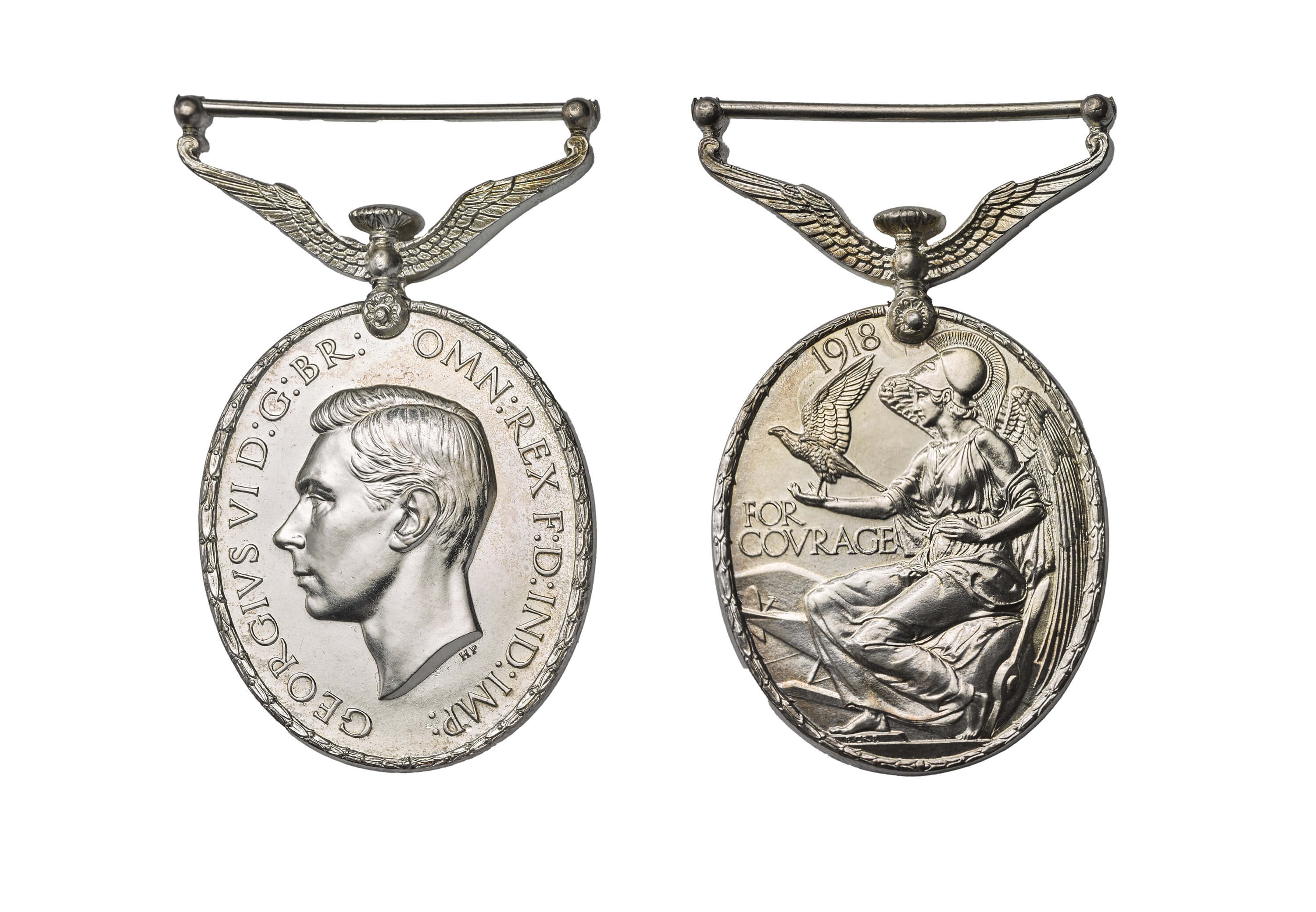
Distinguished Flying Medal
The Blitz of British cities during late 1940 and early 1941 caused a huge amount of damage and loss of life. As London burnt around it, the Royal Mint did its best to carry on although the effects of enemy action caused constant difficulties. The advent of nightly bombings meant that all night work was suspended in the autumn of 1940 and, to make up for lost hours, staff now worked all day Saturday and Sunday. The work was also subject to constant disruptions, damage to the Gas Mains in Stepney in September 1940 left the Mint unable to melt metal and the Coining Section was closed for nearly a month as a result. Damage was also caused to Mint buildings and the partial destruction of the silver and gold melting houses in December meant that work did not resume there until January 1941. Thankfully, loss of life within the Mint was small with only 3 members of staff were killed. The hardship faced by the staff in London was not over looked by those staff working at the branches overseas and £107 4s. 6d. was raised by the Pretoria branch Mint to help staff suffering hardship as a result of the bombing.
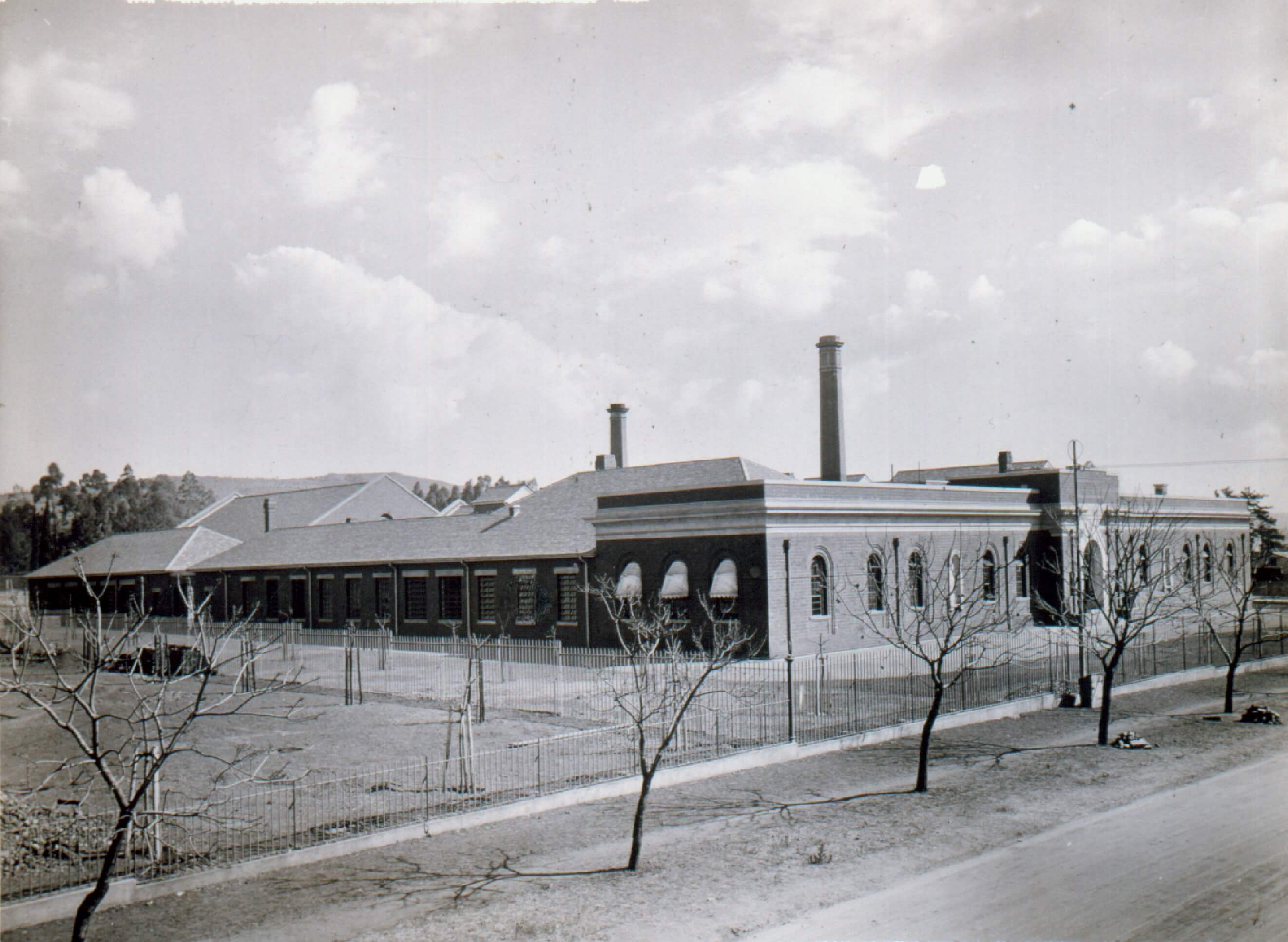
Pretoria Mint building, South Africa
Like many people and institutions, it was a very tired and war weary organisation which celebrated the end of the war in 1945. Just continuing work at pre-war levels would have been a success for the Mint but to have set production records whilst adapting to shortages and the demands of munitions work was a remarkable feat. A hard-working, but no-doubt fatigued staff, would have welcome the two-day holiday that VE and VJ brought. After years of blackouts, the Mint lit up its buildings and showcased the scars left 6 years of warfare. Whilst it would take time to return to normal, the Mint once again opened to visitors in June 1945 when it welcome members of the Forces who wished to look round the organisation that had kept the country supplied with coins it needed.
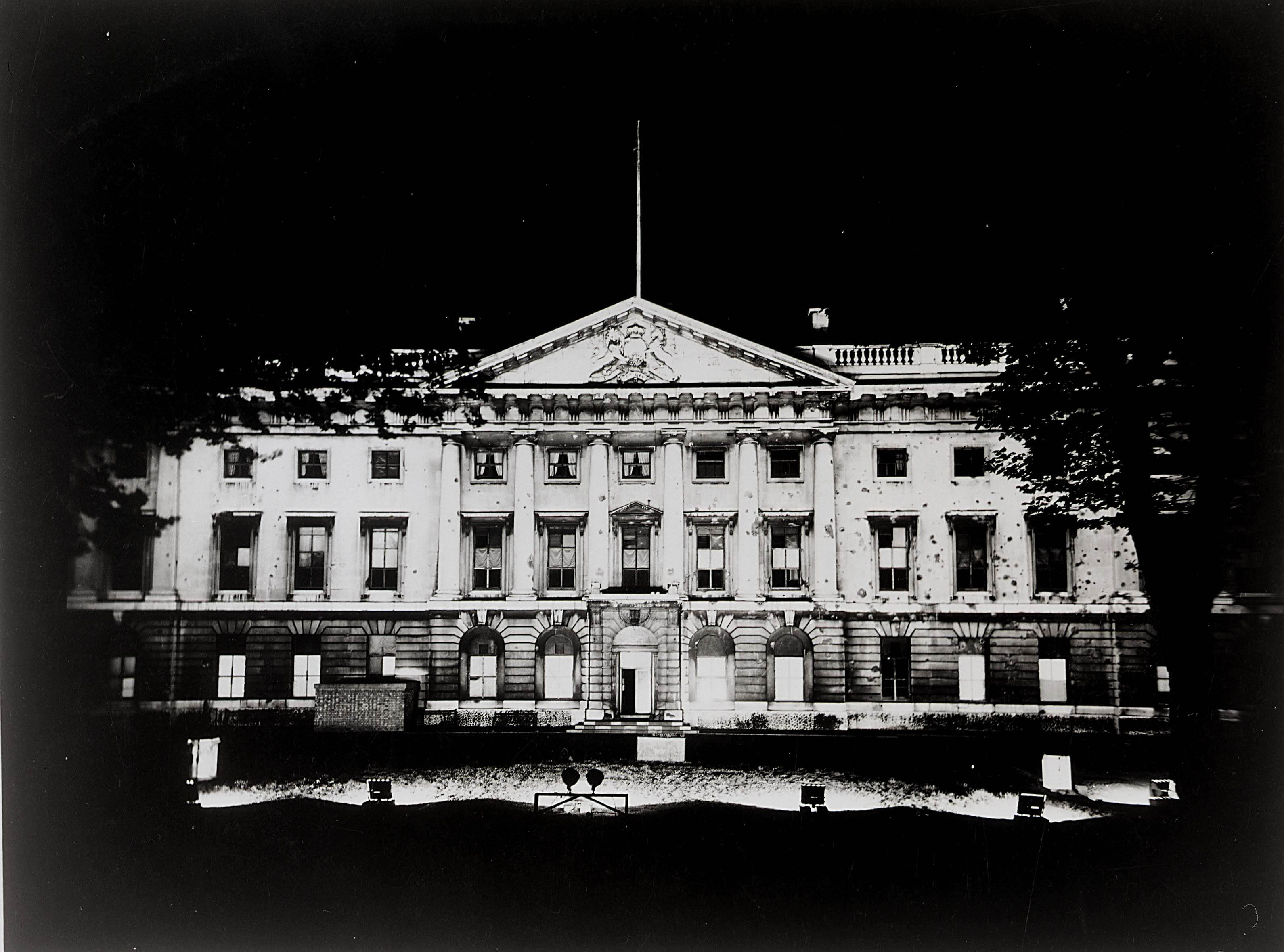
Royal Mint building at Tower Hill lit up on the night of V.E day showing bomb damage
The Royal Mint Museum’s collection survived unscathed throughout the conflict but it was put into storage throughout the war. The room itself had been cleared at the start of the conflict and been used for the manufacture of cartridge weighing machines. Even after hostilities ceased the collection was not directly restored, the weighing machines making way for Bliss presses and benches for the for examination and packing of Campaign Stars.
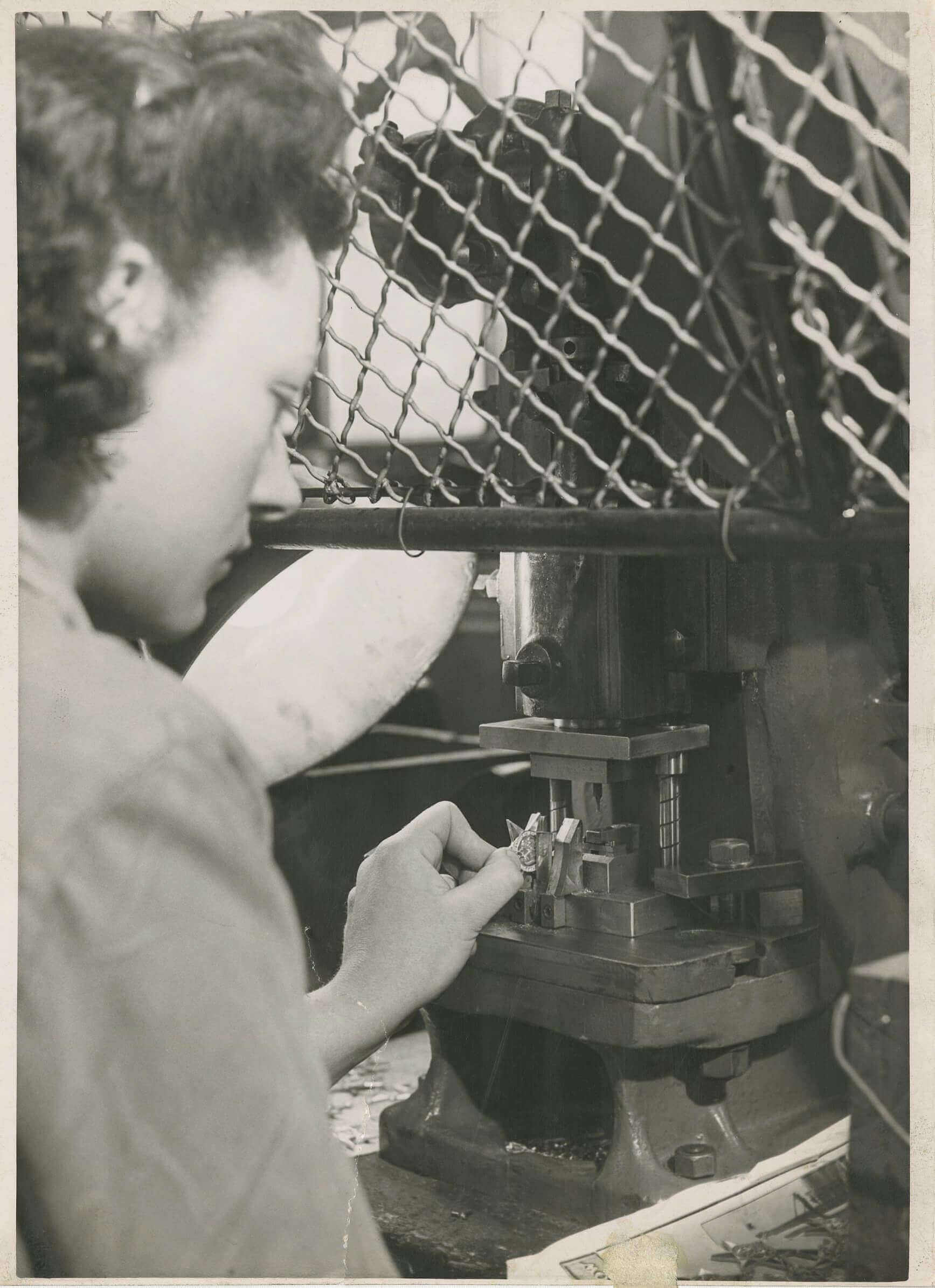
Woman in the Royal Mint factory making Campaign Stars
